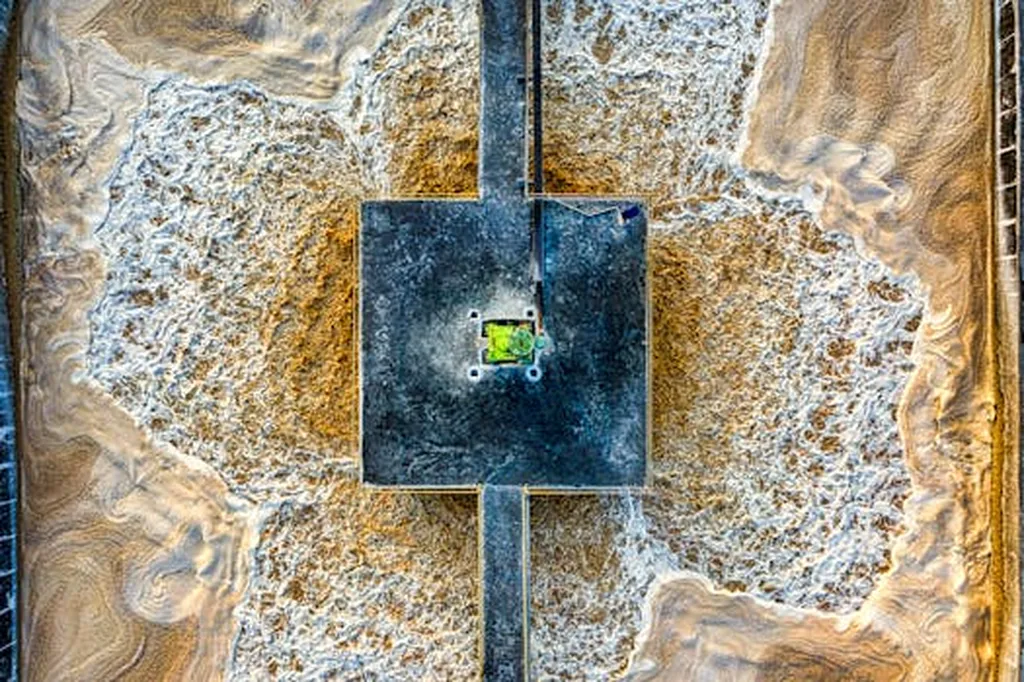In the quest for sustainable water purification solutions, a humble biopolymer derived from seafood waste is making waves. Chitosan, a biodegradable polysaccharide obtained from chitin, is emerging as a powerful tool in the fight against water pollution, according to a comprehensive review published in the journal *Applied Surface Science Advances*. The review, led by Ali Hashem of the Textile Research and Technology Institute at Egypt’s National Research Centre, delves into the mechanisms, performance, and environmental benefits of chitosan-based adsorbents, offering promising insights for the energy and water treatment sectors.
Chitosan’s appeal lies in its ability to effectively remove a wide range of contaminants, from heavy metals and dyes to pharmaceuticals and emerging pollutants. “Chitosan-based adsorbents exhibit remarkable adsorption capacities, typically ranging from 120 to 600 mg/g, and removal efficiencies of 80 to 95 percent under optimized conditions,” Hashem explains. These impressive figures are achieved through various adsorption mechanisms, including electrostatic interactions, chelation, hydrogen bonding, and hydrophobic interactions.
The review highlights several key advancements in modification strategies that enhance chitosan’s performance. Cross-linking, grafting, composite formation, and biopolymer blending improve stability, selectivity, and reusability, with many adsorbents retaining 80 to 90 percent of their capacity over multiple cycles. These innovations are not only boosting efficiency but also paving the way for more sustainable and cost-effective water treatment solutions.
One of the most compelling aspects of chitosan-based adsorbents is their environmental friendliness. Life Cycle Assessments reveal that chitosan has a significantly lower carbon footprint—1.5 to 2.5 kg CO₂-eq/kg—compared to conventional materials like activated carbon (8 to 12 kg CO₂-eq/kg) and ion-exchange resins (15 to 20 kg CO₂-eq/kg). This is largely due to its renewable sourcing from seafood waste and inherent biodegradability, making it an attractive option for industries looking to reduce their environmental impact.
However, the journey towards widespread adoption is not without challenges. The review critically examines issues such as pH sensitivity, ion competition in complex wastewater, and scalability. Despite these hurdles, pilot studies have demonstrated 80 to 95 percent efficacy in real-world applications, indicating strong potential for industrial viability.
Looking ahead, the review highlights several promising directions for future research. Green modification techniques, such as solvent-free synthesis and enzymatic grafting, are being explored to enhance sustainability. Smart adsorbents, including pH-responsive and magnetic materials, are also gaining traction. Additionally, hybrid systems that combine chitosan-based adsorbents with membrane filtration and photocatalysis are being developed to further improve performance.
The implications for the energy sector are significant. As industries strive to meet increasingly stringent environmental regulations, sustainable water treatment solutions like chitosan-based adsorbents offer a viable path forward. By integrating these innovations, the energy sector can not only enhance its operational efficiency but also contribute to a more sustainable future.
In the words of Ali Hashem, “Chitosan-based adsorbents present a scalable, eco-friendly solution for sustainable wastewater treatment.” As research continues to unlock the full potential of this remarkable biopolymer, the future of water purification looks increasingly bright.

